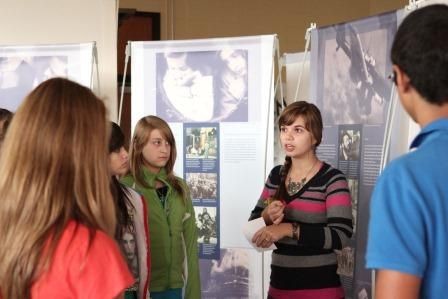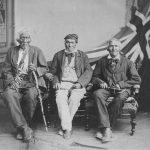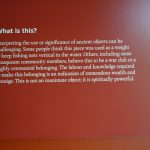
By Julie Couture
“Very powerful to see students learning the information and then guiding their peers.” Photos courtesy of Julie Couture.
A local class on a cold and dark November morning, somewhere in a Canadian high school. Twenty volunteer students from grade 10 to 12 are starting the second and last day of their training. One of them is practicing her tour with her peers and she’s asking someone to read the quote of Anne’s father, Otto Frank, visible on panel six of the exhibition saying that he “realised that Germany was not the world and [he] left it forever”. She continues by asking how many people are not born where they actually live. A lot of hands go up. Then students start discussing how it feels to leave your home country to go live somewhere else. The student guiding then shares that she herself just moved to Canada a couple of years ago and tells a little about her own experience of adapting to her new country. She goes on by attracting her audience’s attention to the pictures from panel eight where you see a smiling girl, enjoying childhood which shows that the worry of Otto Frank around the necessity to emigrate “To Holland” doesn’t seems to reach Anne immediately. You then realise that she’s not yet fully aware of the dangers her family just have escaped from and the concerns of her parents about what the future in this new country will bring them, concludes the student.
Young people showing the relevancy of Anne Frank’s story for young people today, that is one of the main aim of the peer-education project included in the project around the travelling exhibition “Anne Frank: A History for Today”. Since November 2011, three exhibitions are simultaneously travelling to high schools, museums, cultural centres and libraries across Canada. This project has reached so far thousands of visitors in five provinces as well as in Yukon Territory and more than 1,100 high schools students have been trained for two days to become the official guides of the exhibition. Following the training, they are responsible to guide their peers (and the general public) into the exhibition not only to tell Anne’s story but also to create a moment for discussion among young people on themes from the story of this little girl that are still echoing in today’s society.
“The entire experience was great. I learned in depth information on WW2 and the Holocaust. I got to teach people about history and why it is so important to remember this. I felt like we might have made a difference for some people’s outlooks on the world and history”, explains a guide from Winnipeg in 2016.
One teacher that displayed the exhibition in his French school in Toronto in 2015 comments on his experience: “I would recommend without hesitation this project to all high schools. The exhibition being bilingual, it facilitates its promotion in multicultural cities. The content allows teacher to use it for the curriculum in Canadian and World history, social sciences and religion. This project allows students working as guides to gain an unprecedented professional experience that will benefit them later in the job market. Finally, you get the chance to create togetherness with the parents as well as other organisations surrounding the school.”
After she had brought her students in the school where the exhibition was displayed and received a guided tour by one of the peer-guides, a teacher in Montreal wanted to say: “A special thank you to each and every one of your guides. They were able to speak to students with confidence, skill, energy and passion. They wrote in their own way a page of history for our students by making Anne Frank accessible.”
Would you like to offer the opportunity to your students to take an active role in this educational project? Do you want to display the exhibition in your school and welcome students from other neighbourhood schools? For booking or additional information, contact Julie Couture, Coordinator of Canadian projects from the Anne Frank House: j.couture@annefrank.nl


